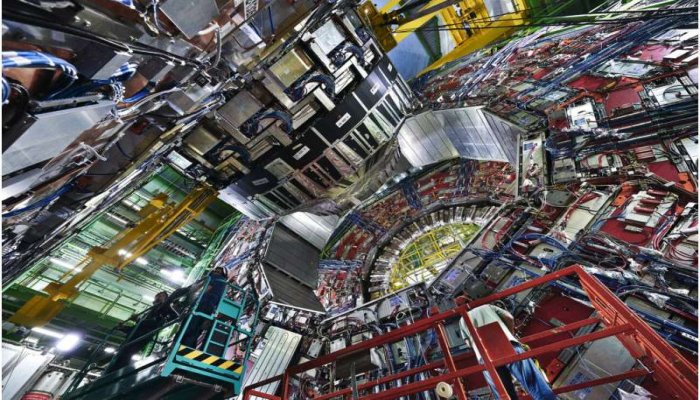Eddie Gonzales Jr. – MessageToEagle.com – The CMS collaboration has recently presented new results in searches for long-lived heavy neutral leptons (HNLs).
Also known as “sterile neutrinos”, HNLs are interesting hypothetical particles that could solve three major puzzles in particle physics: they could explain the smallness of neutrino masses via the so-called “see-saw” mechanism, they could explain the matter-antimatter asymmetry of the universe, and at the same time they could provide a candidate for dark matter.

They are however very difficult to detect since they interact very weakly with known particles. The current analysis is an example of researchers having to use increasingly creative methods to detect particles that the detectors were not specifically designed to measure.
Most of the particles studied in the large LHC experiments have one thing in common: they are unstable and decay almost immediately after being produced. The products of these decays are usually electrons, muons, photons and hadrons—well-known particles that the big particle detectors were designed to observe and measure.
Studies of the original short-lived particles are performed based on careful analysis of the observed decay products. Many of the flagship LHC results were obtained this way, from the Higgs boson decaying into photon pairs and four leptons to studies of the top quark and discoveries of new exotic hadrons.
The HNLs studied in this analysis require a different approach. They are neutral particles with comparatively long lifetimes that allow them to fly for meters undetected, before decaying somewhere in the detector. The analysis presented here focuses on cases where an HNL would appear after the decay of a W boson in a proton-proton collision, and would then itself decay somewhere in the muon system of the CMS detector.
The muon system constitutes the outermost part of CMS and was designed—as its name suggests—to detect muons. Muons produced in the LHC proton-proton collisions traverse the whole detector, leaving a trace in the inner tracking system and then another one in the muon system. Combining these two traces into the full muon track lets physicists identify muons and measure their properties. In the HNL search, a muon is replaced by a weakly interacting heavy particle that leaves no trace—until it decays.
If it decays in the muon system it can produce a shower of particles clearly visible in the muon detectors. But—unlike a muon—it leaves no trace in the inner tracking detector, and no other activity in the muon system. This analysis is based on looking for “out-of-nowhere” clusters of tracks in the muon detectors.
The analysis started by selecting collision events with a reconstructed electron or muon from the decay of the W boson and an isolated cluster of traces in the muon system.
Then, the analysis required the removal of cases where standard processes could imitate the HNL signal.
After the full analysis, no excess of signal above expectation has been observed. As a result, a range of possible HNL parameters was excluded, setting the most stringent limits to date for HNLs with masses of 2-3 GeV.
Written by Eddie Gonzales Jr. – MessageToEagle.com Staff






